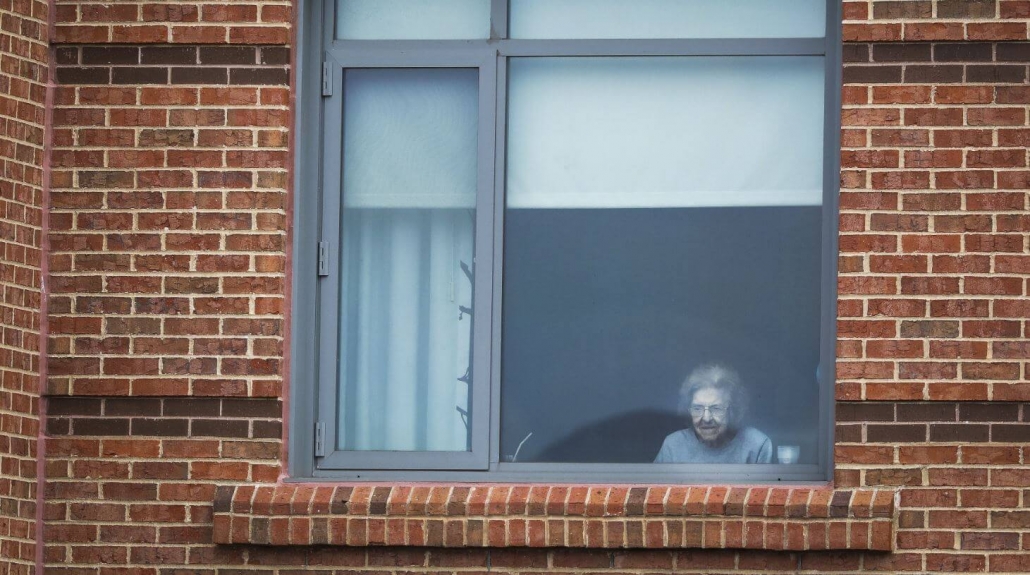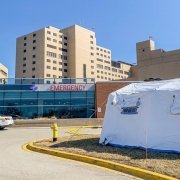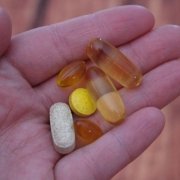Confused About “Shelter in Place”? Read This
A doctor explains the current coronavirus advice once more, for the people in the back
Stay at home and shelter in place. These are our instructions. Dr. Anthony Fauci from the NIH has advised us to stay at home.
California Governor Gavin Newsom and New York Governor Andrew Cuomo ordered residents to shelter in place. Connecticut and Illinois have followed suit. My city, Dallas, announced it yesterday. Other places will likely soon follow. Do Americans understand what it means to practice social distancing and to shelter in place?
I am a doctor. I had to Google it.
Staying at home is crucial
Coronavirus is a new virus. This means the human race has never been exposed. We have no baseline immunity or protective antibodies. We do not have a vaccine or effective medication to treat it. We are all susceptible to becoming sick with Covid-19.
The most effective intervention against the epidemic is to prevent transmission to each other. Two key steps are critical to our success: case detection and prevention.
Case detection is the responsibility of the government.
Prevention is up to us.
Stay at home.
How is Covid-19 spread?
Covid-19 is spread through person-to-person contact via respiratory droplets. Droplets first spread through coughing, sneezing, and respiratory particles. These particles get on our clothes and hands. We then pass the virus through handshakes, hugging, kissing, and other close human contact.
To make it simple, you stay at home unless there is an essential reason to be out.
The virus also survives on surfaces, making every item we touch a potential vector for transmission. This includes doorknobs, cell phones, boxes, papers, computer keyboards, and more.
Each one of us and every item we touch is a potential transmission source. Evidence now reveals people are highly infectious before they begin to show symptoms. To protect ourselves and each other, we must limit close contact with others.
Stay at home
Flattening the curve
Flattening the curve is a trending term on social media. It is sobering to process the true meaning of the phrase. Flattening the curve does not refer to stopping the virus or preventing more from getting sick. That ship has sailed.
The harsh reality is that the same number of people will get sick. Flattening the curve prevents the illnesses from happening all at the same time. It spreads out and delays the infections. The goal of flattening the curve is to prevent surpassing the capacity of our health system to accommodate the needs of the acutely ill.
How do we limit contact?
“Social distancing” is the current terminology. Physical distancing is a more accurate term. The guidance is to limit nonessential contact with others, avoid crowds, and to maintain at least six feet between yourself and others. The six-foot rule reduces the risk of respiratory droplet transmission.
To make it simple, you stay at home unless there is an essential reason to be out.
Practical applications:
Can I buy groceries?
We all must eat and provide food for our families. Online grocery deliveries are available in many places and may be a better option than visiting the store. Wipe the box with disinfecting wipes, if you have them, and wash your hands after handling it. Consider having the driver leave the items on the porch. Tip the driver (leave the money outside, too, if you can) and thank them for their service.
It is acceptable to go to the grocery store. Choose a less busy time. Wipe down the grocery cart with disinfecting wipes. Wear gloves if possible. Try and maintain a six-foot space between you and others. Remember to thank any store employees for having the courage to come to work to supply us with much-needed food.
Can I go to the doctor?
The most critical issue in health care right now is reducing the burden on hospitals. We must create hospital beds, allowing them to care for those in need. We must reduce trips to the emergency room and urgent care centers. All preventative non-urgent visits should be postponed for your safety and to minimize potential health provider exposure. Every doctor visit places the health providers at risk for potential exposure.
Today is a great day to quit smoking and stop any bad health habits.
All patients should optimize their health to reduce the need for in-office visits and emergency room visits. We must own up to our social responsibility. This means taking our blood pressure medication, optimizing our diabetes, and managing any other chronic condition. Today is a great day to quit smoking and stop any bad health habits.
Pregnant women should continue to see their providers to optimize a safe pregnancy. Some changes in the appointment schedule may be prudent. Please follow guidance from your provider.
If you need medical attention, you can also consider a telehealth visit. Multiple companies offer telemedicine services — some are even offering free services. Doctors are working quickly to implement a functional telehealth option for their patients. Many medical issues can be triaged or managed safely via telehealth.
Can I hug my children?
If you and your family are following social distancing guidelines and sheltering in place, then physical contact restrictions between family members are not needed. Continue diligent hand-washing, but hug your children and comfort them through this scary time.
Families of health-care workers must make adjustments. Social distancing from the health-care worker is warranted. I am struggling with this in my own home. It is emotionally difficult.
Can I go out for a walk?
Exercise and fresh air are great ways to stay healthy and alleviate stress while quarantined at home. Outside air is not dangerous. The goal is to limit close contact exposure to other humans. Go outside and ride your bike, take a walk, or go for a jog. Exercise is a wonderful way to cope with isolation. One of my friends has a newfound appreciation for his Peloton bicycle. My parents are using an exercise app from their gym. I am continuing my nightly jog.
Take your kids out for fresh air; just avoid playgrounds and parks with play equipment, because the equipment may be contaminated.
Try yoga or mindfulness apps to help alleviate stress.
Can my kids have a playdate?
No. We must remember, every contact from one person to another is a potential transmission. Asymptomatic carriers may pass the virus from one to another. Carriers may be contagious for several days before the onset of symptoms. Now is not the time for in-person playdates. Explore FaceTime and other online options for social engagement. Keep your kids at home.
Can I go check on my elderly parents?
No. Adults over 60 are at high risk. A well-intentioned visit may transmit the virus to those you love. Check in with them often via phone calls, texts, and video chats. Help them combat loneliness. Do not go visit in person. Make sure they have supplies, food, and medication. Show them your love by avoiding face-to-face visits.
Can I travel?
Nonessential travel, public transportation, and ride-share should be avoided unless absolutely necessary.
Can I go to work?
Many jobs are essential to help keep our economy functional and to keep society safe. Those who can work from home should do so. Those who must go to work should follow all recommended guidelines for social distancing and hand-washing.
Please remember to thank those who are going to work. Remember to thank the police officers, garbage collectors, food delivery services, health workers, and anyone else working to help all of us. I received a Facebook message from an old high school friend expressing gratitude and prayers for health-care workers.
This message from an old friend was the best moment of a stressful week.
Should I wear a mask?
New guidance for those in jobs requiring close human contact is to wear a mask and eye coverage. Others should not wear masks unless directed to by a medical professional, as they are in short supply and desperately needed by those on the front lines.
Should I go get a coronavirus test?
No. Please do not overwhelm the health system. Every test takes up resources and valuable personal protective equipment. If you feel sick, you do not need a test. A negative test does not definitively mean that you do not or will not have the virus. A positive test does not change management. Regardless of the test results, the management will be two weeks of home isolation and supportive measures such as fluids, rest, and acetaminophen.
Only those experiencing severe symptoms, such as difficulty breathing, need in-person medical evaluation.
We all must do our part to prevent the spread of Coronavirus. Sheltering in place will not work if only some of us follow the guidelines.
We will succeed if we all do our part. We are in this together.
The coronavirus outbreak is rapidly evolving. To stay informed, check the U.S. Centers for Disease Control and Prevention as well as your local health department for updates. If you’re feeling emotionally overwhelmed, reach out to the Crisis Text Line.
Thank you to Elemental for publishing this article on Medium.
Blog Author: Dr. Jeff Livingston
Blog Photo By: Erin Clark/Boston Globe/Getty Images













